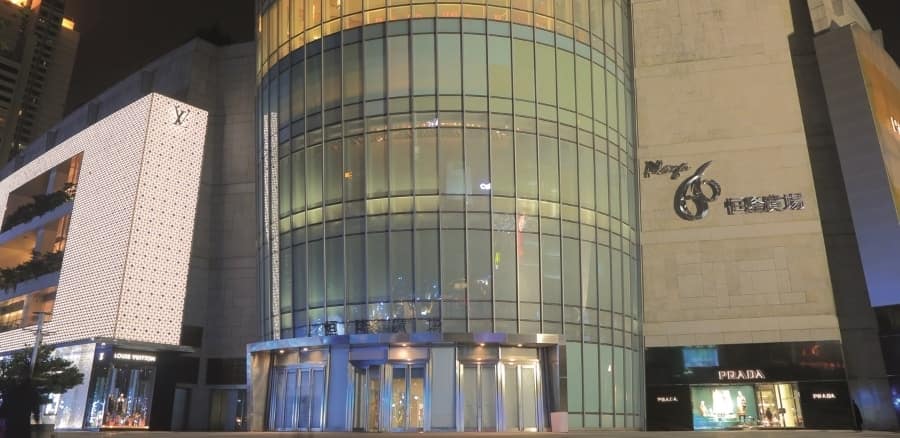-
Australia
Copyright © 2025 Powered by BCI Media Group Pty Ltd
Confirm Submission
Are you sure want to adding all Products to your Library?
Contact Detail

While modern high-rise buildings are built to last for decades, the equipment inside them may not be able to handle rising capacities beyond a few years. This makes modernization, especially of vertical-transport solutions, a top priority.
The China Plaza 66 is one of Shanghai’s most iconic commercial and office properties. When it opened in 2001, the property boasted the latest in design and technology and attracted many marquee tenants. However, over the years, its facilities started to become dated and while it retained its position as a premier destination for tenants, it’s competitiveness in Shanghai’s property market started to come under increasing pressure from newer properties offering more modern facilities.

The solution, decided China Plaza 66’s developers, was to modernize the complex’s vertical-transportation systems to handle rising numbers and improve the flow of people through the complex. This helped improve performance and efficiency throughout the complex, allowing it keep up with and even exceed the offerings made by newer buildings.
China Plaza 66 is an example of a sweeping modernization trend seen across various geographies. A trend that has accelerated as high-rise buildings across the globe begin to show their age.
“We are starting to see a large population of buildings around the world that are starting to hit the 15-20-year lifetime and that’s also the age of the elevator equipment,” explains Jeffrey Montgomery, KONE’s Director of Major Projects for the Asia Pacific Region. “Although the buildings have years of life left in them, the technology within needs to be upgraded, not just once, but constantly as you get new generations of technology every 2-3 years”.
Increasing efficiency through modernization
The advantages of modernization are clear to see. Apart from equipping buildings to handle a growing number of people, it also improves the safety and stability of equipment like elevators and escalators. This, in turn, ensures a better and more optimal user experience, helping get them from point A to point B in comfort. And what’s more, adoption of new technologies ensures improved efficiency and digitization, which can help building operators assess the equipment in real-time and reduce their environmental footprint. “The nature of modernization itself has evolved. While historically modernization efforts involved technologies from only the elevator and escalator world, today modernization efforts involve technologies from the digital world as well,” observes Montgomery.
One such technology revolutionizing the management of Commercial Real Estate (CRE) is the Internet-of-Things (IoT). A recent Deloitte Centre for Financial Services study predicts that that sensor deployment in CRE globally is set to grow from 71 million in 2015 to 1.3 billion in 2020, at a Compound Annual Growth Rate (CAGR) of 78.8%.
Realizing the potential, KONE in partnership with IBM’s Watson IoT platform has launched its 24/7 Connected Services solution. Remote sensors, attached to elevators, are used to collect real-time information to the KONE Cloud network and then analyze them through the Watson IoT program. This helps identify patterns which can be used to improve people flow, understand the working condition of equipment and even arrange for maintenance before a problem occurs.
Keeping disruptions to a minimum
A test case for these technologies is a custom-made modernization solution that KONE provides. Sensors gather real-time data on how many people enter and exit a lobby and what their movement patterns are and the information is then represented on a heat map. This helps the building operators understand the real use patterns of a building, rather than having just a theoretical model, greatly improving their ability to prepare for all kinds of contingencies. And while modernization is essential, developers and building operators tend to be rightly wary of the disruption it can cause to normal building operations.
“Modernization is inherently disruptive,” declares Montgomery. “One of the biggest challenges we face is minimizing the impact on existing users during modernization and KONE continues to build expertise in this area”.
This makes it essential to carry this out in a way that will not cause any downtime or inconvenience residents and tenants. KONE has developed modernization technology that allows for a seamless process, including its KONE EcoMod™ solution that preserves the existing building décor and façade.
A key driver of this expertise is KONE’s knack of investing in the right resources at the right time. Investments in multiple R&D centers globally, in training frontline and managerial staff and in setting-up of effective lines of communication to loopback market knowledge gained by the front-end employees continue to pay heavy dividends and help KONE bring modernization and new life to existing buildings.



